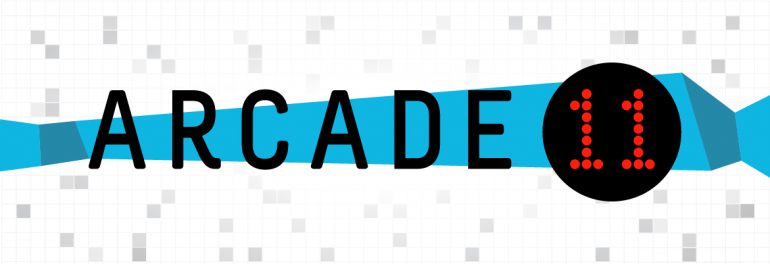
Can games ask us questions? Can we ask questions of our own with them? Arcade 11 presents games and playful media made by members of the Technoculture, Art, and Games (TAG) Research Centre. Visit a playable arcade of research-oriented games and witness the creative and iterative paths each game has taken. We even invite the public to inform the future directions of our works-in-progress by participating as play testers!
Arcade 11 is part of the Montreal Joue festival and is hosted by Concordia’s 4th Space.
WHAT? Games Arcade
WHEN? March 4-8, Monday to Friday, 10am-5pm each day
WHERE? 4th Space (Concordia Library, 4th space, 1400 De Maisonneuve Ouest (corner of Mackay), Montreal)
#Arcade11
GAMES
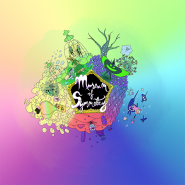 MUSEUM OF SYMMETRY
MUSEUM OF SYMMETRY
WHAT HAPPENS WHEN YOU BRING TOGETHER TRADITIONAL 2D ANIMATION AND 3D VIRTUAL REALITY?
Paloma Dawkins
““There are no rules here. Just enjoy!”
Part invitation, part dare, an impish game mistress welcomes you into a delightfully disorienting pleasure dome inspired by geometry and nature—and wired with infectious dance beats.
What happens next feels like swimming through poetic rainbow juice.
An absurdist mind-and-body romp through the highest clouds to the ocean deep, Museum of Symmetry is the explosive feel-good alter-universe of cartoonist and animator Paloma Dawkins—a room-scale VR experience with 2D animation in a 3D playground as never been seen before.”
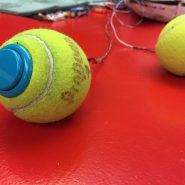 HSH-GO!
HSH-GO!
HOW CAN NEW CONTROLLERS MAKE VIDEOGAMES ACCESSIBLE FOR DIVERSE PLAYERS?
Ludociels for all, HSH Crew
“A digital installation arising from a collaboration between the studio Ludociels for all in Montreal and the collective of artists HSH Crew in Rouen (France). HSH Go! is an accessible, local, collaborative and multiplayer platform game. Each player manipulates a one button joystick designed by Ludociels for all specifically for this installation. HSH-Go! presents players with a darkened scene, created by the artists of the collective HSH Crew. Only closed eyes are visible. The participants explore the setting and restore the light by opening eyes and revealing, step by step, the entire scene. Watch out, once activated, the duration of the opening of an eye is limited. Although it is possible to play the game alone, the experience will be improved if participants collaborate by spreading across the space, using the teleporters.”
 Residual Media Depot Presents:
Residual Media Depot Presents:
SUPER SMASH BROS. RESEARCH
WHY IS IT IMPORTANT TO PRESERVE OLD HARDWARE?
Abbie Rappaport
“Super Smash Bros. Melee (SSBM) is the only game to be played at a competitive level that has not been altered, patched or updated since its release in 2001. The game was conceived as a party game that people of all skills could play casually together. However, shortly after its release, players quickly discovered unlimited competitive potential and began hosting tournaments. Today, stadiums are filled with fans of the game watching top players battle. The subversive use of SSBM coupled with the community’s strict adherence to the original hardware and frame data of the game aligns with the Residual Media Depot’s intention to repurpose, reuse and re-contextualize older or seemingly obsolete hardware.”
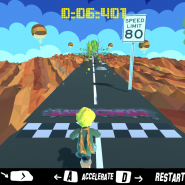 BABY CHAOS
BABY CHAOS
HOW CAN WE INTEGRATE VIDEOGAME RESEARCH LABS WITH THE WIDER GAME DEVELOPMENT COMMUNITY?
Rosy, Q, Sam, Hao Lu, narF
“Relive the colorful joy of learning how to ride a bike…. pushed to the extreme! Can you maintain your balance long enough and can you dodge all obstacles before reaching the end? Game made in 3 days during Critical Hit in summer 2018.”
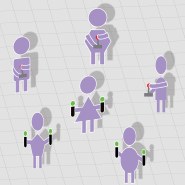 CTRL.ME
CTRL.ME
HOW CAN WE USE GAMES TO BUILD INTIMACY AND TRUST?
Thomas Gauthier-Caron
“ctrl.me is a game you play blindfolded. Paying close attention to the vibrations of two Playstation Move controllers you are holding in your hands allows a teammate to control you with a joystick. What are you going to do in this game of trust, as other people around you are controlled by their respective teammate? Play a good old game of tag of course!”
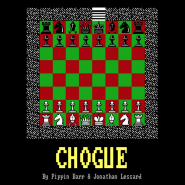 CHOGUE
CHOGUE
WHAT HAPPENS WHEN WE MERGE TWO GAMES INTO ONE?
Jonathan Lessard and Pippin Barr
“Chogue is a hybrid game created by combining the quintessential board game, chess, with the all-time classic “dungeon crawler” Rogue. It is an experiment in game design methodology, asking what it means to make one game out of two and most importantly how you decide which game to take which rules from. Throughout the creation process, Jonathan and Pippin followed the fairly strict procedure of determining key game mechanics and aesthetics and then choosing whether to use the rules of chess or the rules of Rogue. Thus, the spatial layout comes from Rogue and the movement style from chess; the idea of multiple levels comes from Rogue and the combat system comes from chess. In the end, Chogue is simultaneously both games and neither, a true hybrid.”
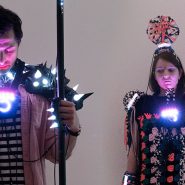 ALT EGO
ALT EGO
WHAT DOES AGENCY LOOK LIKE?
Kaho Abe, Lynn Hughes, Jess Blanchet, Sylvain Payen, Tony Higuchi
“At the core of Alt-Ego is the idea that that epitome of the virtual, the avatar, becomes flesh. At the beginning of the game, four participants divide into two teams and must decide who is the Player and who the Avatar in each team. Through their choices each teams commits, for the duration of the game, to the strange, dramatically asymmetric but potentially deeply complementary relationship between Avatar and Player. A battle is then waged by the competing Players through the augmented costumes of their Avatars. The Avatars literally display great powers of attack and defense but cannot activate or control them. They have, however, one profoundly non-linear power of their own. They control a biofeedback system – but its successful use requires them to find and maintain a deep stillness that, perhaps ironically, intensifies the impression of their passivity. In fact, the Avatar’s ability to focus and control the biofeedback is absolutely essential to the Player’s ability to win the game. The biofeedback determines which Player wins the skill test that decides the attacker for each round. If the avatars successfully focus after the skill test, they also feed a Special Power for their Player which, although it can only be used once, will have a very significant effect on the game. The game plays with ideas of control and agency, of passivity versus action and of linear versus non-linear control. In the end, an apparently passive agent provides very powerful support to the visibly active agent -although the significance of this support is related to how difficult it is to control the nonlinear system. Alt-Ego asks; what does agency look like? What is the power of stillness and interiority? How does surface relate to depth?”
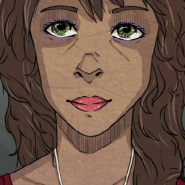 THE OLDEST GAME
THE OLDEST GAME
CAN GAMES HELP US TO UNDERSTAND IMPORTANT SOCIAL ISSUES DIFFERENTLY?
Sandra Gabriele
“The Oldest Game is a newsgame about living life as a sex worker under Bill C-36. In three Canadian cities, players interact with the world as Andrea, with choices to work on the street in Vancouver, as an independent escort in Toronto, or at a massage parlour in Montreal. As Andrea, players juggle everyday challenges of managing work and life: screening clients, paying bills, interacting with law enforcement, and socializing with friends. The game challenges the ways sex work has traditionally been covered in the news media and includes the thoughts and experiences of current and former sex workers in their own words.”
PLAYTEST CORNER
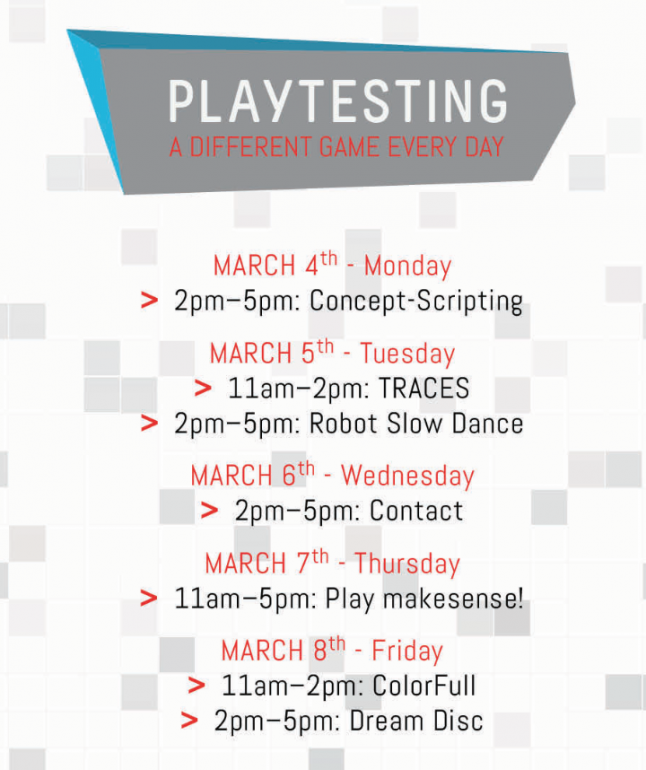 MEET THE DEVS
MEET THE DEVS
HOW ARE GAMES DEVELOPED IN AN ACADEMIC SETTING?
Each day Arcade 11 will showcase games-in-progress by TAG members that need playtesting and feedback!
People will be able to sign up and try these never-seen before games.
MARCH 4th – Monday
> 2pm–5pm: Concept-Scripting A hybrid theater/digital social reasoning game about negotiating power in decision-making.
MARCH 5th – Tuesday
> 11am–2pm: TRACES: TRACES is a game about being a trans time traveler, sent back to a time something like ours to discover the traces of other time travelers. By scanning objects in the environment, you uncover the stories of those who traveled here before you. This game explores themes around gender identity. This game has some strong language and mature themes. I would not recommend it for children under the age of 15.
> 2pm–5pm: Robot Slow Dance: Two-player animatronic diorama game contained entirely inside of a briefcase. Players control a pair of robots who, rather than fighting, dance with and talk to each other, in an exploration of awkwardness, intimacy, and queer relationships.
MARCH 6th – Wednesday
> 2pm–5pm: Contact This is a two-player, cooperative platformer game that takes place in the distant future, after some humans left their home to colonize another planet. Players play as either an Indigenous or Settler character.
MARCH 7th – Thursday
> 11am–5pm: Play makesense! Makesense is a new card game that offers us the chance to practice deep listening, shared realities and new ways of thinking
MARCH 8th – Friday
> 11am–2pm: ColorFull A cooperative drawing game that asks groups to reflect on the multilayered and intersectional nature of wellness.
> 2pm–5pm: Dream Disc Bounce through dream spaces in this relaxed blend of mini-putt and pinball. Pull back and release to fling the disc in any direction. Hit the targets using the fewest shots possible to unlock new collections and explore a universe of shapes and sound. Suitable for children of any age.
LIVE INTERVIEWS
E very day of the festival, you can join Mariko and Michael as they chat with game developers, makers, and playtesters about their exciting research-creation work! Monday March 4 to Friday March 8, 10am-11am in the 4th Space and online at https://www.twitch.tv/tag_lab_tv
very day of the festival, you can join Mariko and Michael as they chat with game developers, makers, and playtesters about their exciting research-creation work! Monday March 4 to Friday March 8, 10am-11am in the 4th Space and online at https://www.twitch.tv/tag_lab_tv
Mariko McDonald is a writer, presenter and sometimes games journalist. (http://gamerwife.com/)
Michael Iantorno is a radio producer, game designer, and graduate student in Concordia’s Media Studies program. His research focuses on videogame hacking, copyright, and fandom. (https://twitter.com/WorldIsSquare)
